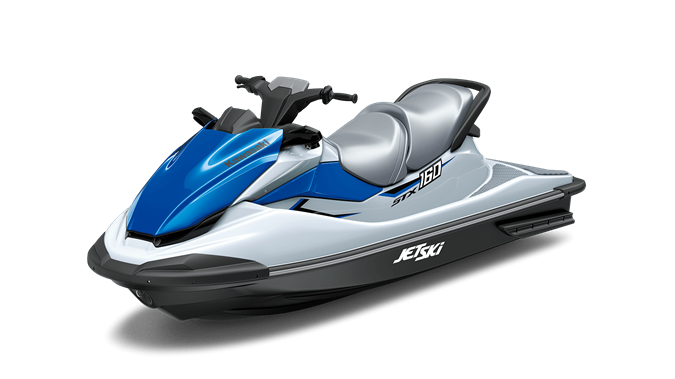To address cracking within the instrument cluster of a Kawasaki Jet Ski, comply with these steps:
Assessment
Inspect the Damage: Examine the instrument cluster for cracks. Determine if the cracks are superficial or if they have an effect on the capability of the show.
Check for Corrosion: Look for signs of corrosion, mainly around electric connections, as moisture can exacerbate damage.
Repair Steps
Disassemble the Cluster
Carefully get rid of screws and any clips maintaining the cluster together.
Be aware of the way additives are arranged for reassembly.
Clean Components
Use isopropyl alcohol to clean any corrosion from circuit forums and connectors. This can assist improve electric connections.
Replace Damaged Parts
If the LCD is broken or not functioning, recall replacing it. Some customers have correctly replaced the LCD polarized film and tactile buttons, restoring capability without needing a complete substitute.
For cracked plastic covers, you can both replace them or use a clean epoxy to fill in cracks, even though this cannot repair the authentic appearance.
Reassemble the Cluster
Carefully reassemble all components, making sure that each connection is steady.
Test the cluster before absolutely sealing it to make sure the entirety is functioning efficiently.
Seal and Protect
Once repaired, consider making use of a UV-resistant cowl or movie to defend in opposition to future solar damage, which is a not unusual reason for cracking.
Preventive Measures
Storage: Always keep your Jet Ski covered and in a shaded region when now not in use to limit solar exposure.
Regular Maintenance: Regularly take a look at and ease the device cluster to prevent moisture buildup and corrosion.
1. Causes of Cracking in Instrument Clusters
Exposure to Sun and Extreme Weather: Prolonged exposure to sunlight can motivate the plastic components of the tool cluster to become brittle, main to cracks. Extreme temperature variations also can contribute to this degradation by causing the enlargement and contraction of materials.
Aging of Materials Over Time: As the materials used within the cluster age, they may lose their structural integrity. This deterioration can bring about cracks even without direct impact or publicity to harsh conditions.
Physical Damage or Accidents: Accidental effects or hard coping during upkeep can result in cracks. Even minor bumps can compromise the integrity of the plastic cowl, mainly if it has already been weakened through environmental elements.
2. Tools and Materials Needed for Fixing Cracks
Key Features of Kawasaki Jet Ski Models
| Feature | Jet Ski Ultra 160 | Jet Ski Ultra 310 |
|---|---|---|
| Engine | 1,498cc Inline 4-Cylinder | Supercharged 1,498cc |
| Hull Design | 22.5 Degree Deep-V Hull | 22.5 Degree Deep-V Hull |
| Seating Capacity | 3 passengers | 3 passengers |
| Instrumentation | 7″ TFT with smartphone connectivity | 7″ TFT with smartphone connectivity |
| Special Features | Smart Reverse, LED lights | Launch Control Mode, Rearview camera |
Model Variants and Pricing
| Model Variant | MSRP | Notable Features |
|---|---|---|
| Jet Ski Ultra 160LX-S | $18,199 | Side-access storage, JETSOUND® Audio System |
| Jet Ski Ultra 160 | $17,199 | Adjustable seat, LED accent lights |
| Jet Ski Ultra 310X | $19,199 | Spacious foot wells, Enhanced storage options |
| Jet Ski Ultra 310LX-S | $20,199 | Multi-mount rails, Rearview camera |
Technical Specifications
| Specification | Jet Ski Ultra 160 | Jet Ski Ultra 310 |
|---|---|---|
| Length x Width x Height | 3,440 x 1,195 x 1,180 mm | 3,580 x 1,195 x 1,180 mm |
| Fuel Capacity | 80 liters | 80 liters |
| Curb Weight | Approximately 437 kg | Approximately 420 kg |
| Top Speed | Up to 60 mph | Up to 67 mph |
Necessary Tools for Repair
Screwdrivers: A set of Phillips and flathead screwdrivers for disassembly.
Pliers: For gripping and manipulating small components.
Utility Knife: To clean up edges around cracks if vital.
Recommended Products
Adhesives: Use clean epoxy or plastic-unique adhesives that provide a strong bond without being detrimental to the plastic.
Plastic Fillers: For large cracks, don’t forget the use a plastic filler that may be sanded down after curing for an easy finish.
Safety Gear for the Repair Process
Gloves: To defend your palms from chemical substances in adhesives and fillers.
Safety Glasses: To protect your eyes from debris whilst running at the instrument cluster.
Three. Step-with the aid of Step Guide to Repairing Cracks
Removing the Instrument Cluster Safely
Disconnect the Battery: Always begin by disconnecting the battery to prevent any electric problems.
Remove the Cluster: Use the ideal screwdrivers to carefully unscrew and detach the tool cluster from the Jet Ski. Take note of any wiring connections and the way they’re arranged.
Handle with Care: Gently carry the cluster away, being cautious now not to damage any attached wires or additives.
Cleaning and Prepping the Surface
Inspect for Damage: Look intently at the cracks and surrounding areas for any additional harm.
Clean the Area: Use isopropyl alcohol and a lint-unfastened material to ease the floor across the cracks very well. This gets rid of dust, grease, and moisture, ensuring better adhesion for fillers or adhesives.
Prepare Cracks: If important, use a utility knife to widen and clean out the cracks slightly. This helps the filler adhere better.
Applying Filler and Smoothing Out Cracks
Choose Your Filler: Select an appropriate plastic filler or epoxy designed to be used on plastics.
Apply Filler: Using a small spatula or applicator, cautiously fill inside the cracks with the selected filler. Ensure it’s implemented evenly and barely overfilled to permit for sanding later.
Let It Cure: Allow the filler to be treated consistent with the producer’s instructions. This might also take several hours or a single day.
Sand Smooth: Once cured, use fine-grit sandpaper to ease out the cramped place until it’s flush with the surrounding floor.
Finish Up: If desired, you could paint or practice a clear coat over the repaired place to healthy the authentic finish.
4. Preventing Future Damage to Your Instrument Cluster
Using Covers and Protective Films
Invest in a Cover: Use a UV-resistant cowl particularly designed in your Jet Ski version whilst it’s now not in use. This protects in opposition to solar damage and particles.
Apply Protective Film: Consider applying a protective film over the device cluster to shield it from UV rays and scratches.
Storing Your Jet Ski Properly When Not in Use

Choose a Suitable Location: Store your Jet Ski indoors or in a shaded place to decrease exposure to harsh climate situations.
Use a Quality Cover: Ensure that your cover suits properly and is crafted from breathable fabric to prevent moisture buildup.
Regular Inspections and Maintenance
Frequent Checks: Regularly check out your instrument cluster for any signs and symptoms of cracking or put on. Early detection can save you greater good-sized harm.
Clean Periodically: Keep the cluster smooth from dirt and saltwater residue, which can motivate corrosion through the years.
5. When to Seek Professional Help
Identifying Severe Damage
The extent of Cracks: If the cracks within the device cluster are huge, affecting the functionality of the show or leading to moisture ingress, it can be time to consult an expert. Severe harm can compromise now not only the visual component but also the operational reliability of the Jet Ski.
Electrical Issues: If you observe electrical malfunctions, which include erratic show readings or failure to begin, those could suggest deeper problems that require expert analysis and restoration.
Costs of Professional Repair vs. DIY
Cost Considerations: Professional repairs can range drastically primarily based on the volume of damage and labor prices. Simple upkeep may cost between $100 to $three hundred, whilst extra complex problems may want to exceed $1,000. In comparison, DIY repairs may only require substances costing around $20 to $one hundred, depending on the goods used.
Risk of DIY: While DIY can shop cash, it additionally contains risks. Improper repairs can cause further harm, doubtlessly resulting in higher prices down the line. If you’re unsure about your restore abilities or if the problem appears complex, in search of expert assistance may be a greater value in the end.
Warranty Considerations for Newer Models
Warranty Coverage: If your Jet Ski continues to be underneath assurance, any maintenance has to ideally be handled by an authorized technician to avoid voiding the assurance. Check your assurance phrases regarding self-repairs.
Manufacturer Recommendations: Many producers propose expert providers for specific upkeep, particularly those related to electric additives or structural integrity.
Conclusion
Ensuring a functional and crack-loose tool cluster is vital for a higher Jet Ski to revel in. Regular preservation and well-timed upkeep can save minor issues from escalating into big issues. By expertise, while searching for professional assistance and weighing the prices of DIY as opposed to professional offerings, you may make knowledgeable selections that beautify your leisure on the water. Proper care no longer most effectively extends the existence of your instrument cluster but additionally contributes to standard protection and performance all through your aquatic adventures.
FAQs About Kawasaki Jet Ski Instrument Clusters
1. What are common problems with device clusters on Kawasaki Jet Skis?
Common troubles consist of cracking of the plastic cover, malfunctioning displays, and electrical failures. These issues can arise from publicity to daylight, getting old materials, and physical damage.
2. What causes cracking inside the tool cluster?
Exposure to Sun and Extreme Weather: Prolonged sun publicity could make plastics brittle.
Aging of Materials: Over time, substances degrade, leading to cracks.
Physical Damage: Accidental influences or rough dealing can motive damage.
Three. How can I restore cracks in the instrument cluster?
Remove the Cluster: Safely detach the cluster from the Jet Ski.
Clean the Area: Use isopropyl alcohol to smooth around the cracks.
Apply Filler: Use an appropriate plastic filler to fill within the cracks and sand it smooth after curing.
4. When must I be looking for expert help for repairs?
Seek expert help if:
The harm is widespread or influences functionality.
You stumble upon electric problems which you cannot diagnose.
Your Jet Ski is under assurance, as self-repairs may also void it.
5. What tools and materials do I need for DIY repairs?
You will want:
Screwdrivers (Phillips and flathead)
Pliers
Utility knife
Plastic fillers or adhesives
Safety equipment (gloves, protection glasses)
6. How can I prevent future damage to my device cluster?
Use Covers: Invest in UV-resistant covers for whilst the Jet Ski is not in use.
Proper Storage: Store your Jet Ski in a shaded vicinity or indoors.
Regular Maintenance: Conduct common inspections and cleanings to trap troubles early.
7. Are there any sources for similar assistance?
You can find helpful motion pictures on structures like YouTube that demonstrate restore techniques for specific models, such as the Kawasaki STX collection. Forums and manuals also provide treasured insights and network help for troubleshooting problems.
Read More
Visit Dotarle for More Info.



